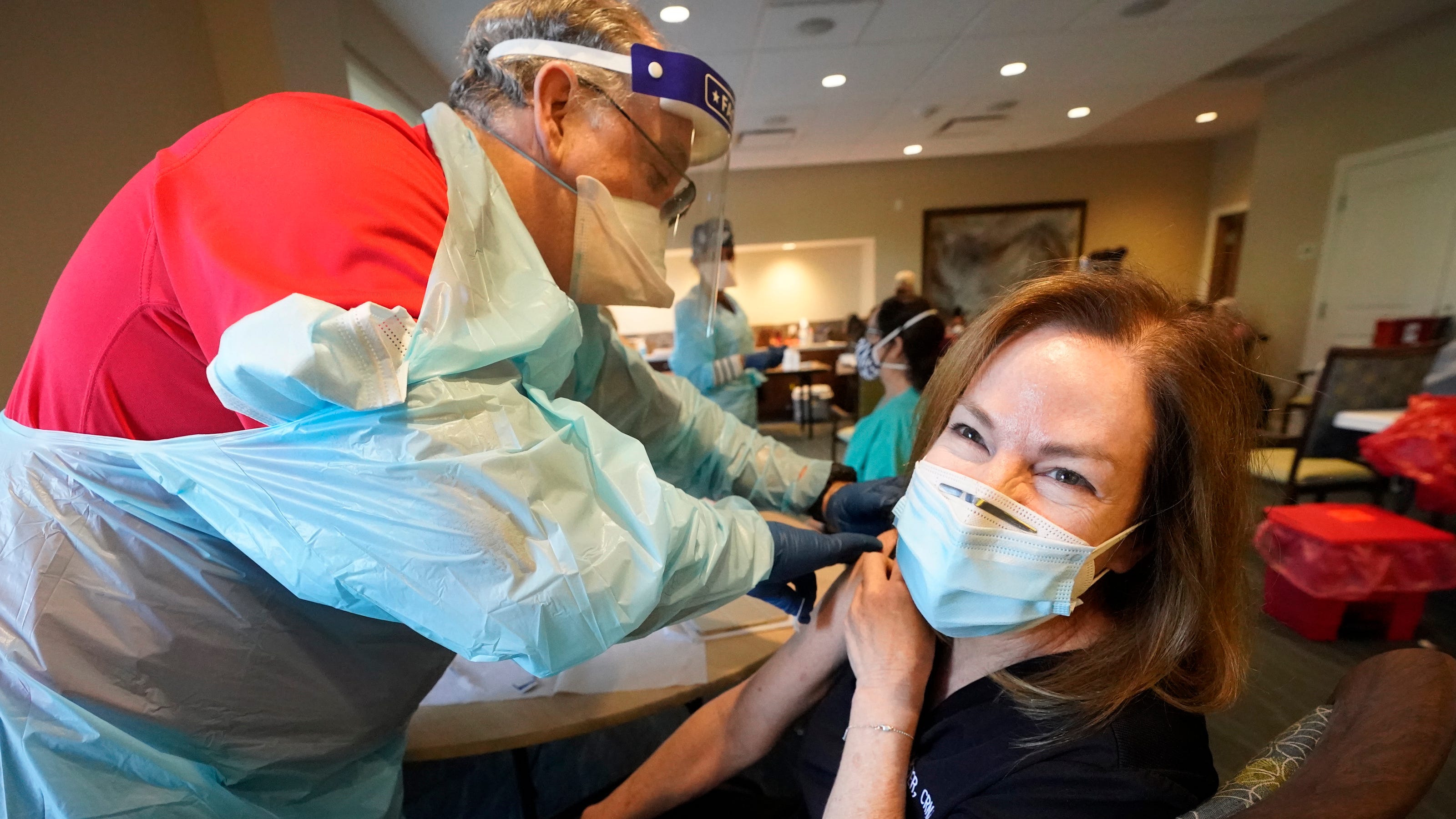
COVID-19 variants are surging in America and scientists are learning the vaccine may not work as well against them.
“There’s definitely some tangible fatigue on the health care workers’ side, being sick of COVID and sick of people disregarding public health guidance, getting sick and expecting us to defer another vacation or put off something else,†said Eric Cioe-Peña, an emergency room physician running a COVID-19 field hospital in Staten Island, New York.The arrival of vaccines in mid-December has removed some of the worry for medical workers, who were at the front of the line for inoculations.Health care worker Pam Peter, right, prepares to receive her second dose of COVID-19 vaccine last month in Pompano Beach, Fla.But Daignault also remembers the exasperation he felt watching his fellow Los Angeles County residents ignore health advice as infections piled up and turned the area into the center of the COVID-19 calamity over the winter.“Last year was super frustrating for me because I worked most of the major holidays – July 4, Memorial Day, Labor Day, Thanksgiving – with the exception of Christmas,†Daignault said.“Thinking about new variants that may be so different that maybe the vaccine I got a month ago is not going to work in six months, it makes me want to cry,†she said.In May, health care workers in Montreal held a demonstration demanding time off for COVID-19 fatigue. (Photo: Ryan Remiorz, The Canadian Press via AP).Variants first found in South Africa and Brazil, both believed to be somewhat more resistant to vaccines, have also been detected in this country, along with domestic variants.
Some public health experts worry the variants could prompt a spring surge that may negate many of the gains made since the nation endured a post-holiday spike that peaked with a one-week average of nearly 250,000 new infections per day in early January.Closing in on the one-year anniversary of the coronavirus outbreak being declared a pandemic – March 11, 2020 – it’s still not clear when the United States, which has reported more than twice as many cases and deaths as any other country, will have a hold on the health crisis.“The curveball is the variants, but I don’t think it’s a big enough curveball that we can’t hit the pitch,†said Dr.“They’re coming, they’re growing, but the good news is the main one we’re seeing and are worried about is the British one, and the vaccines work essentially as well as they do for the old virus.
Public health specialists draw optimism from the likelihood a new Johnson & Johnson vaccine will be authorized soon, providing a valuable tool that requires only one shot and normal refrigeration, major benefits when trying to reach distant communities.The Johnson & Johnson vaccine, expected to be authorized by late February, won't have that requirement. (Photo: Photo provided by Pfizer).
Daignault said vaccines other than those produced by Pfizer and Moderna “were not given their day in the sun by the media because of decreased effectiveness against the variants.Between the 110 million who might have contracted the virus and the 43 million with at least some protection from the vaccines, “you have enough non-susceptible people to create enough down pressure that the variants may not take off in the way that we fear,†Wachter said.
Ken Thorpe, a professor of health policy at Emory University in Atlanta, said the importance of a consistent message from the federal government in times of crisis can’t be overstated.The influential model of the University of Washington’s Institute for Health Metrics and Evaluation projects 589,000 deaths by June 1, a gloomy reminder of the damage COVID-19 continues to inflict.
“I have a bunch of pictures of him on my wall,†Daignault said, “and when I go into work every day, I look at those pictures and feel like, ‘This is my D-Day